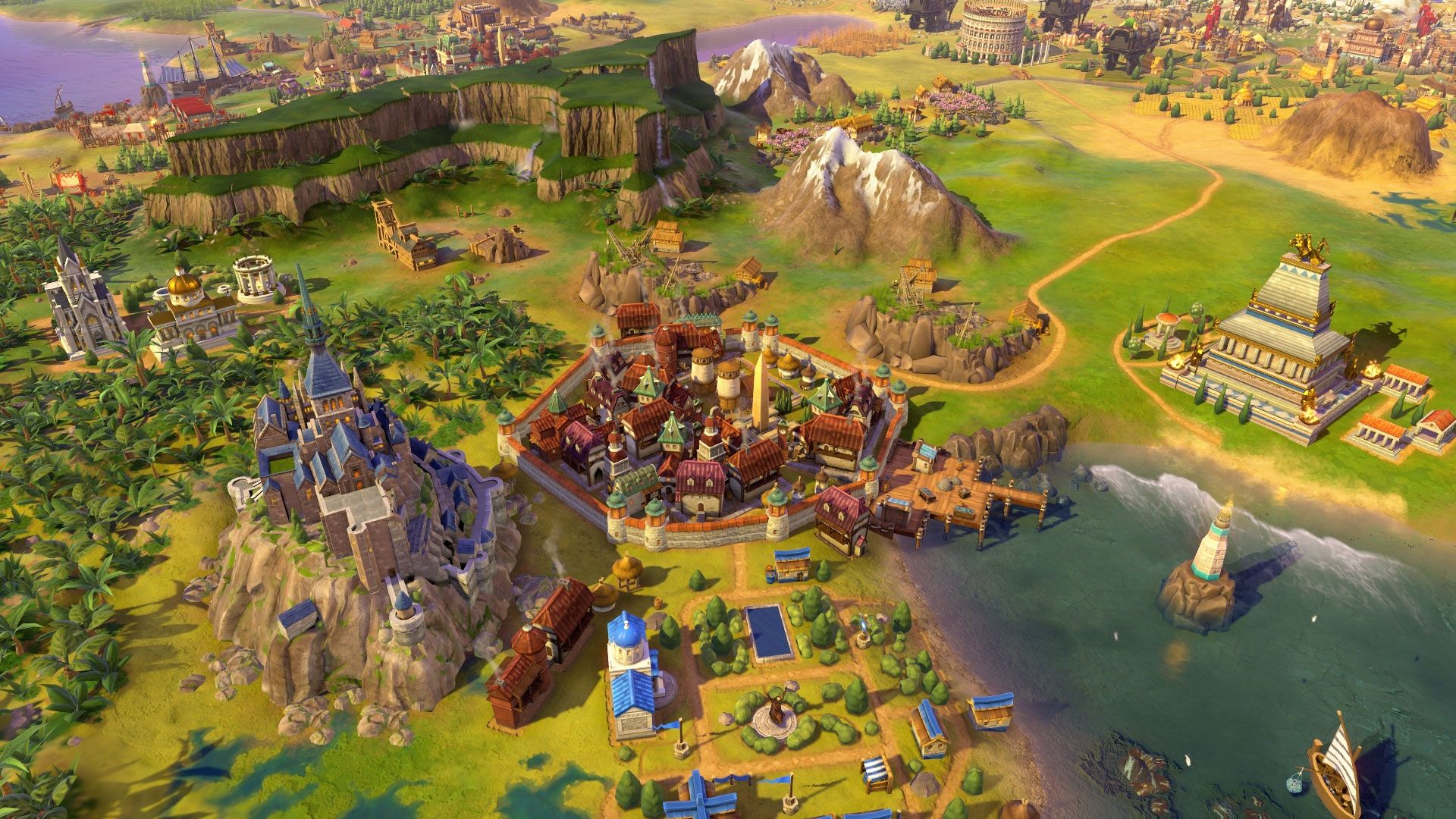From the official civ article:
What makes an ideal monarch? Is it someone wise and diplomatic? A forward-thinking patron of the arts or a stalwart defender of the realm? Few live up to that standard, but you can count Tamar – ruler of Georgia at the height of its golden age – among them.
Born around 1160 (dates of her birth vary) to King George III and Queen Burdukhan, Tamar would be in for an early fight to keep her crown. The nobles of the court preferred her cousin, Prince Demna, to be next in line of succession and by the time she was 17, a minor rebellion broke out. Those nobles were summarily crushed by King George III.
Tamar was proclaimed heir and co-ruler by her father shortly after that rebellion. When George III died in 1184, Tamar assumed the throne of a fractured Georgia. Compromises needed to be made and Tamar was pressured into accepting the nobles’ choice for her husband: The Rus prince Yuri.
The two were wed in 1185, but the marriage didn’t last. Yuri led Georgian forces to victory in battle, but he was a coarse and unpleasant person, causing all sorts of problems for the royal court. So she filed to divorce him on grounds of drunkenness and immorality. This was monumental considering the era: the monarch of a fervently Christian nation, divorcing her husband and then receiving permission to re-marry from the church? That just didn’t happen back then.
As Tamar left Yuri, Georgia saw the greatest expansion of its domain begin. The Georgians fought against the neighboring Muslim sultanates, aided by exceptional generals (including the new king consort, David Soslan) and conquered them. Nearby kingdoms became vassals and protectorates. Georgian nobles stopped scheming, then began rallying to her banners. Georgians even founded the Empire of Trebizond, injecting themselves into the powers of the Middle East.
Tamar became the frequent target of marriage proposals after Yuri. After all, she was an eligible queen of a prosperous kingdom. One story tells of how the Sultan of Rum declared war on Georgia, stating he would have Tamar "as a Muslim bride or a Christian concubine." The diplomat sent to deliver this message was summarily punched in the face by a Georgian courtier.
Tamar, always pious, is said to have prayed at the cave city and monastery of Vardzia, then addressed her troops from the steps of the church. Inspired by her piety, the Georgians crushed the Sultan’s forces.
Tamar was also a strong patron of the arts. She bolstered trade and commerce, and minted coins bearing her monogram and titles. Laws were codified. Churches and cathedrals were built. Georgian culture developed as a strong and lively blend of Byzantine Christianity and Persian-inspired ideas.
Tamar is said to have died in 1213, but her grave remains a mystery. Some say she was buried in a monastery, to prevent desecration. Others claim her remains were secreted to the Holy Land, for burial near the Holy Sepulcher.
She came to power in a divided kingdom, and left it larger, more powerful, and sure of its cultural identity. She is canonized as a saint in the Eastern Orthodox faith, and a national symbol for Georgians even today.
UNIQUE UNIT: KHEVSURETI
The warriors from Georgia’s Khevsureti territory maintained their traditions for countless generations. (Until the early 20th Century, they continued to fight with weapons and armor more suited to medieval times.) These fierce Georgians dressed in chainmail and carried swords, axes, and small, black bucklers adorned with crosses for nighttime raids—due to the shield’s color, the warriors were practically invisible in the moonlight. It should come as no surprise that this warrior order gets a Combat Strength bonus, but they also suffer no movement penalties on hilly terrain. Though tradition was their watchword, they did adapt with the times, incorporating firearms as their importance on the battlefield became unmistakable.
UNIQUE STRUCTURE: TSIKHE
Sitting high over the countryside, situated in the hills and rocky cliffs, the Georgian fortresses – or tsikhe – stand guard. A tsikhe features high curtain walls with either rounded or triangular merlons (the solid part of the “cut outs” on the wall used as defensive structures).
The Georgian fortresses were particularly difficult to assault due to their position on the high ground. Unique to the Georgians, it raises the strength of your outer defenses to the highest level while at a lower production cost than Renaissance Walls.
Although this type of fortress existed during the time of Alexander the Great, the Georgians employed them effectively through the 17th Century. And even today, they are a big tourism draw. Once you advance to the Conservation Civic with Georgia, you will be able to benefit from that tourism as well.
UNIQUE LEADER ABILITY: GLORY OF THE WORLD, KINGDOM AND FAITH
Tamar can declare a Protectorate War after gaining the Theology Civic. Considering Tamar’s upbringing – and how she was known to inspire her troops before battle, they gain bonus Faith for a limited time after declaring a Protectorate War. In addition, Georgia gains bonuses as they continue to deliver the word of God. An Envoy sent to a city-state of your majority religion counts as two.
UNIQUE CIV ABILITY: STRENGTH IN UNITY
Out of a time of relative instability for Georgia, Tamar helped give purpose and unite her people. Honor her achievements through Pride Moments. When making a Dedication at the beginning of a Golden Age, receive its Normal Age bonus towards improving Era Score, in addition to its Golden Age bonus.





